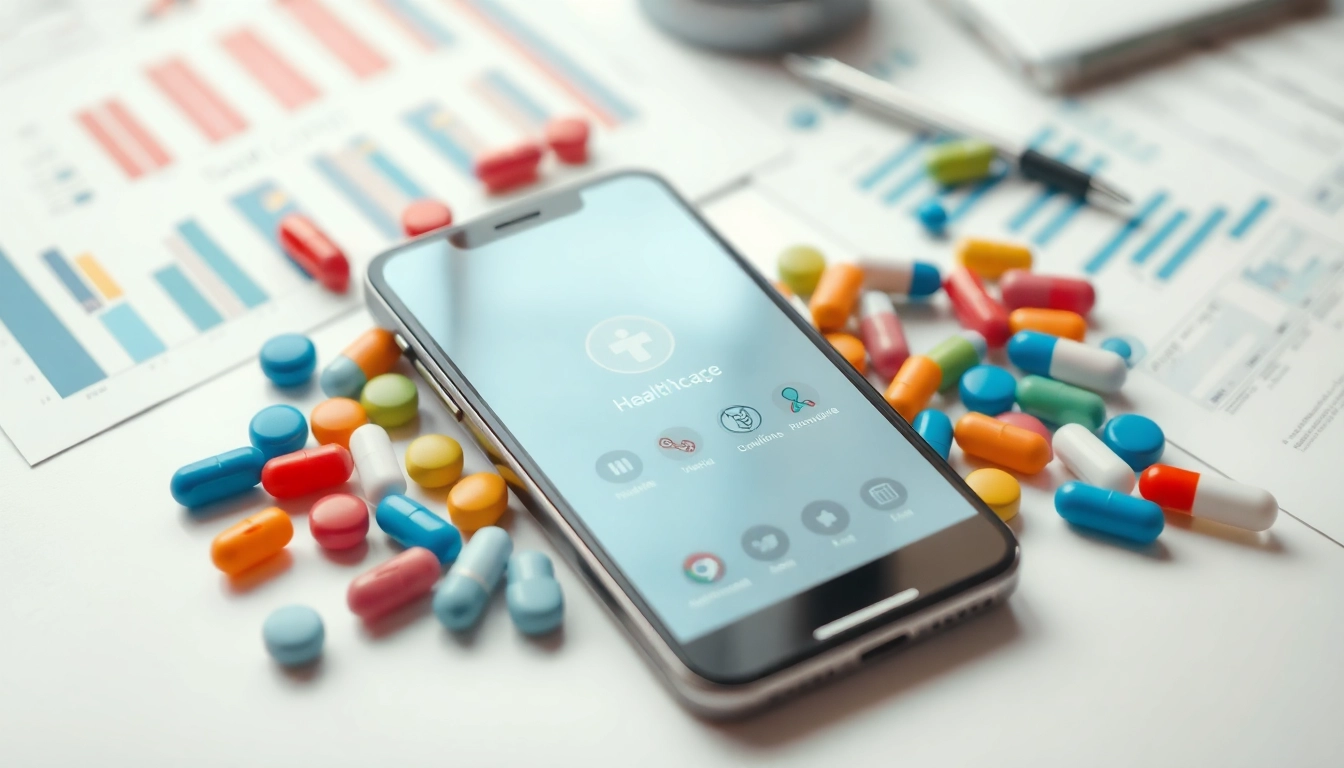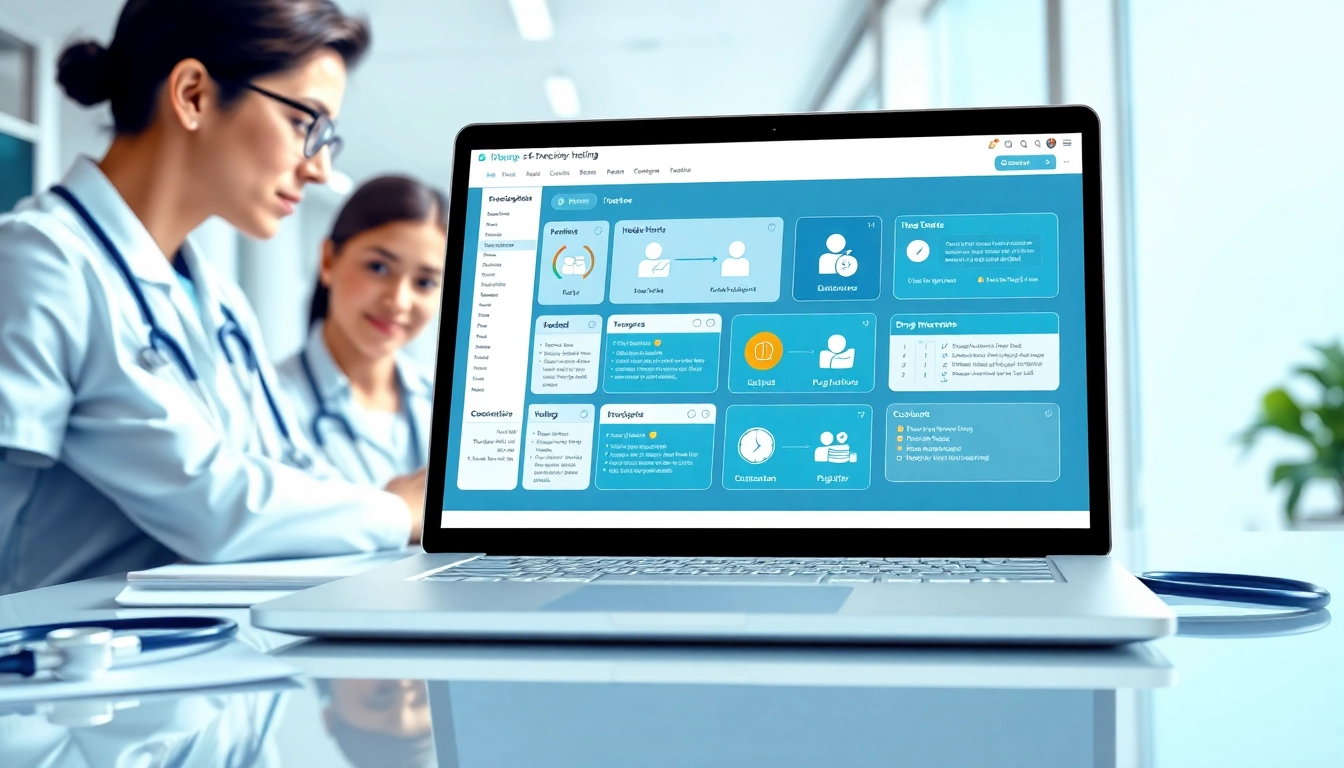Understanding the Importance of Top Rated Prescription Applications
In the age of technology, where convenience is paramount, prescription management has evolved significantly through the advent of mobile applications. The integration of technology into healthcare has transformed how patients interact with their medications, making it essential for healthcare practitioners and patients alike to become familiar with the features and functionalities of top rated prescription applications. These applications not only streamline the process of managing prescriptions but also enhance overall patient outcomes by promoting better adherence to medication regimens. For an expansive selection of tools that cater to medication management, top rated prescription applications offer solutions that can simplify the often-complex world of pharmaceuticals.
Benefits of Utilizing Prescription Applications
Prescription applications come with a myriad of benefits that revolutionize medication management. Firstly, they improve accessibility to information regarding medications, allowing users to easily check doses, interactions, and side effects.
Some benefits include:
- Improved Medication Adherence: Reminders and notifications help ensure patients take their medications on time, significantly improving adherence rates. This is vital for chronic conditions where continued medication is necessary.
- Easy Refill Management: Users can avoid running out of medication by receiving notifications when it’s time to refill prescriptions, and many apps allow ordering refills directly.
- Informed Decision-Making: Many applications provide drug interaction checks and detailed descriptions, empowering users to make informed choices about their medications.
- Engagement with Healthcare Providers: Apps can facilitate communication with pharmacists and doctors, allowing patients to clarify doubts regarding their medication.
Common Challenges Faced by Users
While the benefits are considerable, users may encounter challenges when adapting to these applications. Common issues include:
- Technical Difficulties: Users may struggle with app navigation, experience crashes, or face compatibility issues with their devices.
- Data Privacy Concerns: With sensitive health information being managed digitally, users may worry about the security of their data.
- Over-Reliance on Technology: Some users might become overly reliant on notifications, leading to negligence in self-monitoring their health regimens.
Evaluating App Features That Matter
Understanding the features that enhance usability is key to optimizing the use of prescription applications. Important features to look out for include:
- User-Friendly Interface: An intuitive design ensures that all users, regardless of their technological proficiency, can navigate the app with ease.
- Customizable Reminders: The ability to tailor notifications and reminders to the user’s preferences allows for a personalized experience.
- Comprehensive Drug Information: Access to a robust database of drug information, including side effects, interactions, and guidelines, enhances user education.
- Integration with Other Health Services: Compatibility with telehealth services or wearable devices can amplify the effectiveness of the app.
Top Rated Prescription Applications: A Comparative Analysis
When assessing the effectiveness of prescription applications, a comparative analysis can reveal which features and performances stand out among the top rated options. This section explores key attributes that enhance user satisfaction.
Leading Features to Look For
With many applications available, distinguishing the top rated ones involves identifying standout features that bolster their usefulness. Key features that contribute positively to user experience include:
- Synchronization Across Devices: The ability for an app to sync across multiple devices ensures that users have access to their medication information anytime, anywhere.
- Usage Statistics: Some applications offer analytics to help users observe their adherence patterns and make adjustments as needed.
- Doctor-Patient Connectivity: Seamless communication features that allow users to share their prescriptions and health history with healthcare providers strengthen care continuity.
User Feedback and Reviews
User feedback is invaluable for understanding the strengths and weaknesses of prescription applications. Reviews often highlight both positive outcomes, such as improved medication adherence, and challenges faced, such as software bugs or customer service responsiveness.
- Positive Reviews: Many users praise apps that feature proactive reminders and integrate well with their healthcare routines.
- Criticism: Common criticisms focus on technical performance, particularly slow load times or difficulties in updating medication lists.
Trends in User Preferences
Understanding the evolving landscape of user preferences is essential for app developers and healthcare providers. Current trends indicate a growing demand for:
- Integration with Wellness Programs: Users increasingly prefer applications that connect medication management with overall health management, tracking dietary habits and physical activity.
- AI-Driven Insights: Applications leveraging artificial intelligence for personalized medication management and insights are gaining popularity.
Integrating Top Rated Prescription Applications Into Your Routine
For individuals looking to harness the power of prescription applications, proper integration into daily routines is critical. This section outlines practical steps to embed these applications seamlessly.
Steps to Make the Most of These Apps
Following a strategic approach to app integration can maximize its benefits. Here are steps to effectively incorporate these tools:
- Choose the Right App: Evaluate various options based on the features listed previously and user reviews to select the one that best fits individual needs.
- Set Up User Profiles: Upon installation, input all necessary medication and personal health details to customize the experience.
- Enable Notifications: Allow notifications to ensure timely reminders and updates about medication intake.
- Regularly Update Information: Keep the app updated with any changes in medication or dosage to ensure accuracy.
Tips for User-Friendly Navigation
Effective navigation enhances the user experience. Consider the following tips:
- Familiarize with Features: Take time to explore all features and settings within the app to understand its full capabilities.
- Utilize Search Features: Many applications have robust search capabilities; users should leverage this to quickly find information about medications.
- Seek Help Resources: Most apps have FAQs or support forums that can troubleshoot common issues, helping users optimize their use of the application.
Engaging with Healthcare Providers Through Apps
Utilizing the full potential of prescription applications also means engaging effectively with healthcare providers. Here are ways to do this:
- Share Medication Lists: Many applications allow users to share their medication history with healthcare providers, facilitating informed discussions during consultations.
- Participate in Telehealth: Leverage the app’s telehealth features to consult with providers when needed, addressing medication-related questions swiftly.
Maximizing the Effectiveness of Your Prescription Application
To truly leverage the capabilities of prescription applications, users should actively seek to maximize their functionality. This involves implementing strategies that boost medication adherence and overall health outcomes.
Tracking Medication Adherence
Monitoring adherence is paramount for effective medication management. Users can:
- Regularly Review Usage Statistics: Many apps provide statistics on dosage adherence that can help users assess their compliance over time.
- Set Personal Goals: Establishing specific, achievable goals related to medication adherence can motivate users to stay on track.
Leveraging Reminders and Notifications
Utilizing the reminder feature effectively can bolster compliance. Consider these strategies:
- Schedule Reminders: Align notifications with daily routines, such as meal times, to improve recall and routine.
- Adjust Reminder Frequency: Depending on the medication schedule, adjusting reminder frequencies can keep users engaged without feeling overwhelmed.
Utilizing Health Data for Better Outcomes
Data from prescription applications can inform health insights. Users should aim to:
- Track Trends: Look for patterns in health data that could indicate the effectiveness of medication and prompt discussions with healthcare providers.
- Engage with Community Features: If available, community features within an app can provide support and shared experiences that enhance user motivation.
The Future of Top Rated Prescription Applications
The landscape of healthcare technology continues to evolve, impacting prescription applications significantly. Emerging trends indicate future developments that promise to enhance the functionality of these tools.
Emerging Technologies and Features
As technology advances, new features and integrations are becoming available. Future trends include:
- Blockchain for Security: The introduction of blockchain technology could enhance data security for users, reinforcing privacy and trust.
- AI Integration: Artificial intelligence could provide predictive analytics for medication adherence based on individual patient data.
Anticipated User Trends
User preferences are likely to shift further towards applications that offer comprehensive health solutions, including features such as:
- Holistic Health Management: Users will increasingly seek apps that manage not only medication but also dietary, physical, and mental health aspects.
- Social Features: Features that allow users to share experiences and tips may become more desired, fostering community engagement.
Implications for Healthcare and Accessibility
The enhancements of prescription applications can greatly affect healthcare delivery, particularly in increasing accessibility to medications and health information. Anticipated implications include:
- Improved Patient Outcomes: Enhanced access to timely medication information can lead to better patient safety and health outcomes.
- Broader Adoption of Digital Tools: As these applications demonstrate effectiveness, healthcare systems may advocate for their adoption, making healthcare technology more common.



